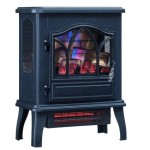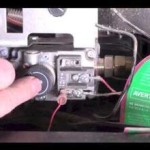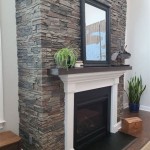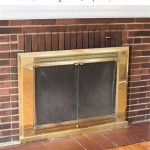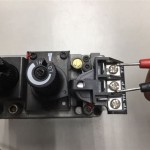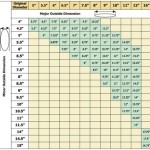How to Start an Open Fireplace: A Comprehensive Guide
Starting an open fireplace can provide both warmth and ambiance, but it requires understanding and adherence to a specific process. A properly built fire ensures a safe, efficient burn and minimizes the risk of smoke entering the living space. This guide outlines the steps involved in successfully starting and maintaining a fire in an open fireplace.
Prior to initiating the fire-starting process, ensure the fireplace and chimney are in optimal condition. A clean chimney is paramount to prevent dangerous chimney fires. Creosote, a byproduct of burning wood, accumulates inside the chimney and is highly flammable. It is recommended to have the chimney inspected and cleaned annually by a qualified professional. Furthermore, verify the damper is fully open to allow for proper ventilation. A closed damper will impede airflow, forcing smoke back into the room.
Preparing the Fireplace for Ignition
The initial steps involve gathering the necessary materials and constructing a stable fire base. This foundation is crucial for a sustained and controlled flame. Gathering the correct materials is essential for successful ignition. The most important are firewood, kindling, and a fire starter. Each of these is discussed below.
Firewood selection is a critical component of fire-building. Seasoned hardwood is the preferred choice, as it burns hotter, longer, and produces less smoke than softwood or unseasoned wood. Seasoned wood has a moisture content below 20%, achieved through air-drying for at least six months, preferably a year or more. Check for darkened ends and cracks in the wood, which are indicators of proper seasoning. Examples of hardwoods include oak, maple, ash, and birch. Avoid using treated wood, plywood, or construction debris, as these materials release harmful chemicals when burned.
Kindling consists of small, dry twigs and branches that ignite easily. This material serves as a bridge between the fire starter and the larger pieces of firewood. Gather a sufficient quantity of kindling before beginning the fire-building process. Look for dry, brittle twigs that snap easily. Examples of suitable kindling include small pieces of pine, cedar, or birch bark. Avoid using damp or rotten wood, as it will not ignite readily.
A fire starter provides the initial flame to ignite the kindling. Several options are available, including commercially produced fire starter logs, paraffin wax cubes, and natural tinder such as cotton balls dipped in petroleum jelly. Newspaper can also be used, but it burns quickly and produces a lot of ash. Avoid using flammable liquids such as gasoline or kerosene, as they pose a significant safety hazard.
Once the materials are assembled, the next step is to prepare the fire base. Clean the fireplace hearth of any accumulated ash and debris from previous fires. This will improve airflow and prevent embers from smoldering unnoticed. Position a grate in the fireplace to elevate the firewood, allowing air to circulate underneath. If a grate is not available, a small bed of sand can be used to achieve a similar effect.
With the initial preparation complete, the process of constructing the fire lay can begin.
Building the Fire Lay: Log Cabin Method
There are various methods for building a fire lay, each with its own advantages. The log cabin method is a popular and effective technique that provides good airflow and a sustained burn. It requires arranging the firewood, kindling, and fire starter in a specific configuration to create a stable and efficient fire.
First, place two larger pieces of firewood parallel to each other on the grate, leaving a small space between them. These logs serve as the foundation for the fire. Ensure the logs are stable and won't roll. Then, place two more pieces of firewood perpendicular to the first layer, forming a square or rectangle. This creates the "log cabin" structure.
Continue layering the firewood, alternating the direction of each layer, until the structure reaches a desired height, typically three to four layers. The size of the firewood should decrease with each layer, with the smallest pieces on top. This creates a pyramid-like shape with ample space for airflow. The height of the structure depends on the size of the fireplace. It should not exceed the height of the firebox opening.
Inside the log cabin structure, carefully arrange the kindling. Create a small teepee shape of kindling in the center of the structure, directly above the grate. Lean the kindling against itself, ensuring it is stable and won't collapse. Leave enough space for airflow around the kindling. The amount of kindling needed depends on the type of wood being used. More kindling is required for damp or less flammable wood.
Place the fire starter beneath the kindling. If using a fire starter log, place it horizontally under the teepee of kindling. If using paraffin wax cubes or natural tinder, place them directly beneath the kindling. Ensure the fire starter is securely positioned and won't move during ignition.
The log cabin structure provides a stable base for the fire, allowing for optimal airflow and a sustained burn. The kindling ignites easily, providing a bridge between the fire starter and the larger pieces of firewood. This method is relatively simple and effective, making it a popular choice for beginners and experienced fire-builders alike.
Igniting and Maintaining the Fire
Once the log cabin structure is complete, the next step is to ignite the fire starter and carefully monitor the flames. Proper ignition and maintenance are crucial for a safe and efficient burn. After lighting the fire starter, closely observe the flames as they spread to the kindling. Allow the kindling to burn until it is well-established, with flames reaching several inches in height. Avoid adding firewood too early, as this can smother the flames.
Once the kindling is burning vigorously, begin adding smaller pieces of firewood to the fire. Place the firewood on top of the burning kindling, ensuring there is enough space for airflow. Avoid overcrowding the fire with too much firewood, as this can reduce oxygen flow and cause the fire to smolder. Small pieces that burn brightly will encourage the larger ones to light, and the oxygen will keep the fire running.
As the fire grows, gradually add larger pieces of firewood to maintain a consistent flame. Place the firewood strategically to ensure optimal airflow. Avoid blocking the flow of air by packing the firewood too tightly. Rearrange the firewood as needed to keep the fire burning evenly. Use a fireplace poker to adjust the position of the logs and improve airflow. Add logs parallel to each other, leaving perhaps an inch of space between them for good contact with the oxygen in the air.
Monitor the damper throughout the burning process. Ensure the damper is fully open to allow for proper ventilation. Adjust the damper as needed to control the airflow and prevent smoke from entering the room. If the damper is too open, the fire may burn too quickly. If the damper is too closed, the fire may smolder and produce excessive smoke.
Never leave a fire unattended. Always keep a close eye on the flames and ensure the fire is contained within the fireplace. Use a fireplace screen to prevent sparks from escaping and potentially igniting nearby materials. Keep flammable materials such as curtains and rugs away from the fireplace.
When the fire is no longer needed, allow it to burn down completely. Do not attempt to extinguish the fire with water, as this can create steam and damage the chimney. Once the embers have cooled, carefully remove the ashes and dispose of them in a metal container. Store the container away from flammable materials.
Following these steps will enable safe and enjoyable use of an open fireplace, keeping the home warm and safe.

How To Build And Start A Fire In Your Fireplace Full Service Chimney

How To Start A Fire In Fireplace Make The Perfect Easiest 4 Steps

How To Build And Start A Fire In Your Fireplace Full Service Chimney
How To Start A Fireplace Fire 2 Safe And Easy Methods

How To Open Up A Fireplace Direct Fireplaces
How To Start A Fire In Fireplace Building Step By Guide

How To Light A Fire Lighting Tips Jotul

Fire Make Start Build A In The Fireplace
How To Start A Fire In Fireplace Allstate

How To Turn On Gas Fireplace
Related Posts

